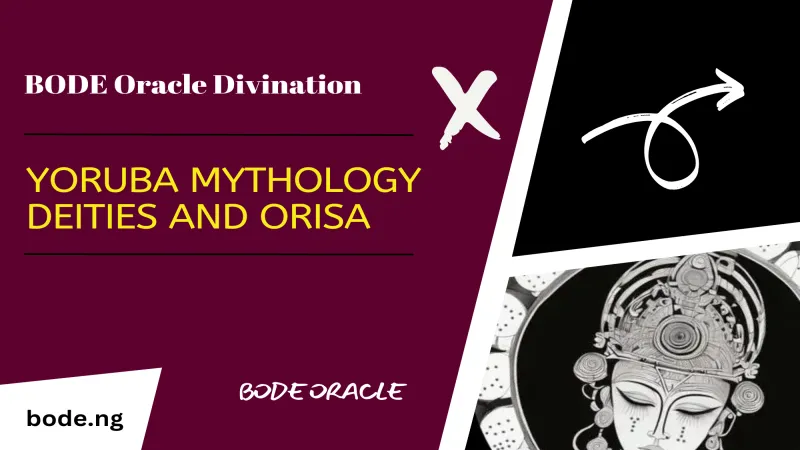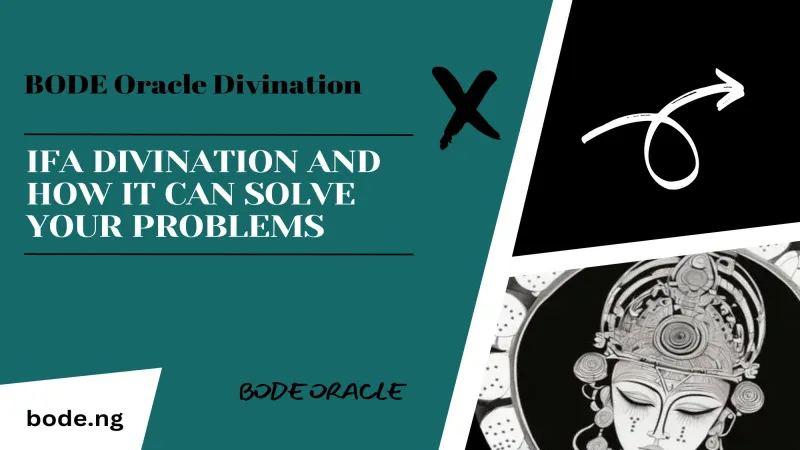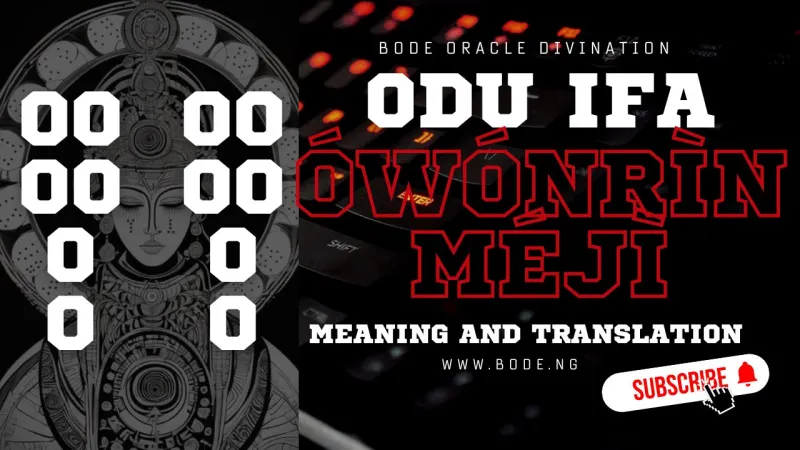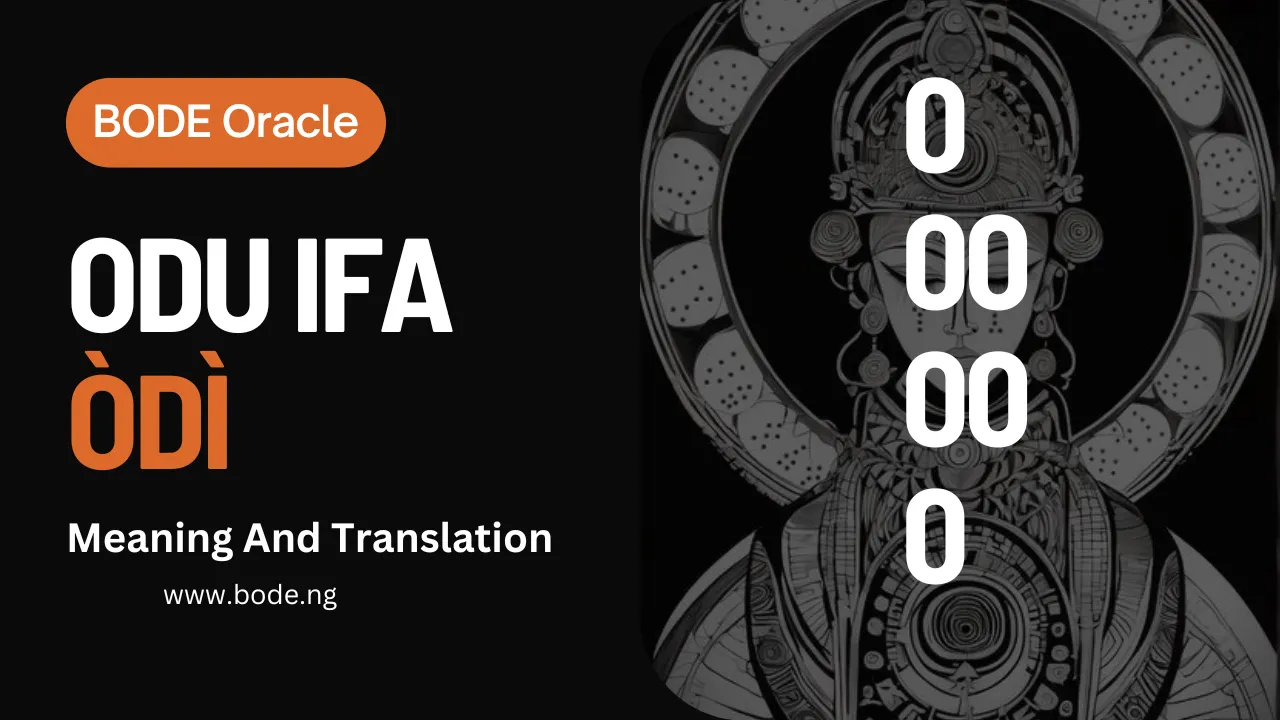The history of the Yoruba religion dates back to the Stone Age. Influenced significantly by agricultural practices from the Middle East, the Yoruba people developed their religion around 600 BC.
In its early stages, they symbolized their deities through elements of nature such as rivers, storms, mountains, and forests. As agriculture spread, along with advancements in metallurgy and modernization, the Yoruba gods began to take on more human-like qualities.
The Yoruba divination system encompasses spiritual teachings, mythology, history, and traditional practices. The Supreme Deity in Yoruba belief is known as Olódùmarè.
Read More
Iwe Odu Ifa by Ifayemi Awopeju Bogunmbe
Odu Ifa Signs And How They Are Cast
Olódùmarè is considered a god who resides in heaven, viewed as the mightiest among the other supreme deities in the Yoruba religion:
Oludumare - the Supreme Creator;
Ọlọ́run - the ruler of the Heavens;
Olofi - the conduit between Orún (Heaven) and Ayé (Earth)
Orishas, regarded as protectors, lead and oversee daily prayers, acting as intermediaries between the human world and the divine.
The Yoruba creation story varies across versions, each affirming the presence of numerous Orishas but offering different explanations for their origins. Each Orisha embodies particular ideas, objects, or natural phenomena.
During religious celebrations, Orishas are believed to manifest by possessing believers, causing them to enter a trance. In this state, individuals speak and act as if they were the Orisha themselves.
The Yoruba religion places strong emphasis on continual offerings and prayers to the Orishas, and the community deeply respects the words of those in possession.
People Also Read
Opon Ifa The Ifa Divination Tray
Ifa Divination And How It Can Solve Your Problems
The Orishas (or Orisa), who can be either benevolent (egungun) or malevolent (ajogun), are often symbolized through natural forces or everyday human pursuits.
The Orishas' History Based On The Yoruba Creation Story
The Yoruba believe that Olodumare created the Orishas and cast powers of dominion into the air. Each Orisha seized powers, enabling them to participate in creation and govern specific realms.
Olodumare created the Yoruba people through Oduduwa, who settled them in the city of Ife (or Ile-Ife), establishing cultural identity and kingship.
After Orisha Obatala separated the land from the waters, Oshun was the only female among the 17 Orishas Olodumare sent to complete the work.
The male Orishas returned to Olodumare to admit failure, explaining that they had disregarded Oshun due to her youth and gender.
Olodumare sent them back to apologize, as only Oshun could complete the creation. She finished the task, filling the earth with beauty, fertility, love, and everything needed for life.
The Orishas provide humanity with Ashe/Ase (life) and Ayanmo (fate), and each person chooses their destiny before birth, reincarnating to fulfill it in the next life.
Esu (also known as Eshu or Elegua), the god’s messenger and guardian of crossroads, doorways, and change, was left out of a plot by the Orishas to overthrow Olodumare and rule the world.
Esu foiled their plan and received the role of a trickster figure with freedom to influence human lives. When Olodumare withheld rain, causing plants to wither and water sources to dry up, the Orishas repented to no avail.
Oshun, transformed into a peacock, flew to Orun (Heaven) to express their remorse. Passing near the sun, she lost most of her feathers and arrived weak and unwell.
Moved by her devotion, Olodumare released the rains, healed Oshun, and made her the only Orisha permitted to carry messages to Heaven. Although the Orishas sometimes challenge Olodumare, they remain attentive to their duties.
You Can Also Read More On
Brief History of Hermeneutics in Relation to Odu Ifa
List of Orishas From The Yoruba Mythology
People call upon the Orishas in both personal and communal rituals for enlightenment, spiritual strength, or help with daily challenges.
According to various sources, there are at least 401 Orishas, many of whom appear in Yoruba creation stories and are referenced in archaeological history.
Yoruba Female Orishas Roles And Responsibilities
Aja: Orisha of the forest, animals, and herbal healing.
Aje: Orisha of wealth.
Ayao: Orisha of the air.
Egungun-oya: Orisha of divination.
Mawu: Orisha of the sun and moon.
Ọbà: Orisha of domesticity and marriage (first wife of Shango).
Olókun: Patron Orisha of descendants of Africans taken during the Atlantic Slave Trade.
Ọ̀ṣun/Oshun: Goddess of love, intimacy, fertility, beauty, wealth, and diplomacy (second wife of Shango).
Ọya: Goddess of the Niger River, guardian of the dead; associated with wind, lightning, fire, and magic (third wife of Shango).
Yemọja/Yemaya: Mother goddess and patron deity of women, associated with the Ogun River.
Yoruba Male Orishas Roles And Responsibilities
Aganjú: Orisha associated with volcanoes, wilderness, and rivers.
Babalú Ayé: Orisha of the Earth, closely connected to infectious diseases and healing.
Erinlẹ̀: Orisha of medicine, healing, and comfort, serving as the physician to the gods.
Èṣù: Orisha of crossroads, duality, beginnings, travelers, fertility, and death, known as a trickster and psychopomp.
Ibeji: Twin Orisha symbolizing vitality and youth.
Kokou: Orisha of war, known as a fierce warrior.
Ọbàtálá: Creator of human bodies, representing light, spiritual purity, and moral integrity.
Oduduwa: Orisha associated with humanity.
Ògún: Orisha of iron, fire, hunting, politics, and war.
Oko: Orisha overseeing agriculture.
Osanyin: Orisha connected to the forest.
Oṣùmàrè: Orisha of the rainbow serpent, associated with creation and procreation.
Ọ̀ṣọ́ọ̀sì: Orisha of hunting and the forest.
àngó/Shango: Orisha governing thunder, lightning, fire, virility, war, and stability.



